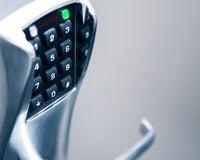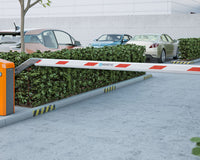Every business has physical or digital assets that are off-limits to people in the organization. How you protect these restricted areas depends on the rigid data or door control that prevents unauthorized access.
If you have spaces in the building you need to safeguard, physical access control is the best solution. For a long time, business owners have relied on the service of a security guard or two to safeguard their buildings.
But thanks to physical access control systems, which helped enhance the physical security of gates and doors.
What Is a Physical Access Control?
Building access control is roughly divided into two main categories: physical and logical access control. Physical access control is meant for physical assets or locations, while logical access control is intended for controlling data or digital space access for cybersecurity.
Physical access control systems (PACS) are electronic systems that use authentication and authorization features. It controls who can gain access to a physical space. Integrating it into security gates improves the physical security system and prevents theft and intrusions.
Both physical and logical access control systems should comply with the National Institute of Standards and Technology Special Publication (NIST SP) for best practices in information security.
How Physical Access Control Works
The physical access control systems function with basic components like access points, credentials and access control servers. When someone wants to enter a facility, PACS will require them to scan their credentials at the access reader.
The access reader scans the information and transmits it to the control panel. The control panel is the data store, which contains the database of all access information. The information is previously configured by the system administrator or owner of the access rights.
The control panel then sifts the information from the credential for authentication. If the credential matches, the control panel transmits the signal to a physical barrier like a door lock to open and enable entry.
Components of a Physical Access Control System
The access control system components are the devices and data resources that simultaneously work to complete the door and lock functions. These are the:
Access Points
Access points are the physical security perimeter like gates, turnstiles, or doors that control access to a physical space.
Access Control Software
The software controlled by the admin powers and controls the physical access system. The platform controls the access points and the privileges of the admin and the authorized personnel.
Credentials
Credentials come in different types. They can be digital items or physical access devices that end-users use to gain entry. It can be a password, pin code, smart card, proximity card, mobile or biometric credential.
Access Readers
The access readers or door access controllers and keypads are the hardware inspectors installed in gates and doors. The device scans the information presented by the user and transmits it to the control panel.
In the past, access readers were simply keypads, but recent upgrades introduced state-of-the-art biometric scanners like fingerprint and iris readers.
Control Panels
The control panel is the part of the physical access control system that processes and verifies the credentials. If they are valid, the control panel then instructs the physical barrier to open; otherwise, it will not budge. Control panels also provide the monitoring and reporting of access information.
Locking Mechanism
Electric strikes, magnetic locks and electromechanical or mechatronic locks are physical devices that operate the access point. This hardware engages and disengage the physical access control system as the control panel directs.
Access Control Server
The access control server is the data center that stores the data, access privileges and audit logs. It tracks the activity and can generate reports on entries and attempts on the door access system.
Control servers may be legacy or on-premise systems. It can also be a cloud-based access control system.
Request-to-Exit (RTE) Device
RTE devices are part of the access control system that allows free exit from the door. It is a vital component in the system that allows tenants to exit freely, especially during fires and accidents. RTE devices may be an exit button or hands-free infrared sensor.
Physical Access Control System Credentials
Access credentials vary greatly in every company. Some companies even utilize two or more of them for heightened security. It is not unusual for secured federal facilities to install keypads and reinforce them with other security controls like biometric scanners or mobile access.
Business owners may choose from different access credentials, such as: Keypads require a PIN or password for authentication and are often used with physical keys. They are considered less secure since they can be easily shared, or the keys can get stolen.
Key Cards or Key Fobs These are digital credentials programmed for a particular door in the form of a key card, fob or ID badge. It is used in large companies where handing physical keys is impractical.
Unfortunately, these credentials are also prone to falling into the wrong hands. Biometric Access Control Biometric readers use technologies that scan the physical or digital identity of the user.
Some examples are fingerprint scanners, facial recognition, and iris scanning, which provide higher security. Mobile Access Control Mobile phones are configured with the access control system through mobile apps.
The administrator can update the privileges and access rights or have them rescinded for a particular user. The mobile system is still prone to hacking, so they are often used along with physical credentials and/or biometrics for multi-factor authentication.
Physical Access Control
Installing physical access control in a place of business is an important step towards creating a secure and safe work environment. The type of access credentials you will use mainly depends on your company, users and the privacy and security level you need.
Access controls are often paired with a camera and video surveillance system for real-time footage and visual verification. These access control solutions leave no room for errors and ensure your business is managed from all angles.
There is a broad range of physical access control systems in the market. If you want a feasible system that will work best for your property, contact us at All Security Equipment.
Our customer service will be able to help you narrow down your options. Now, you can streamline how you run your business and protect your resources with the right access control solutions.












